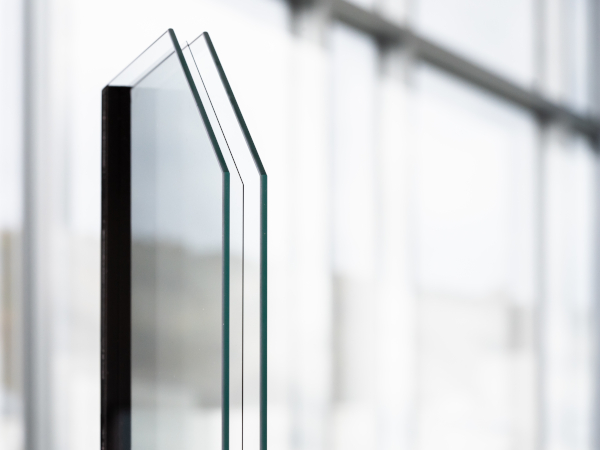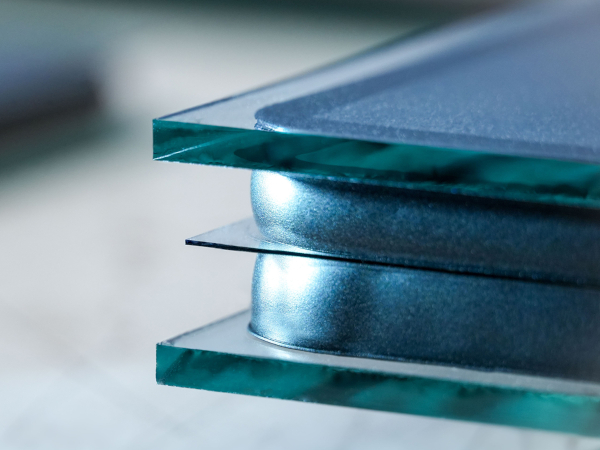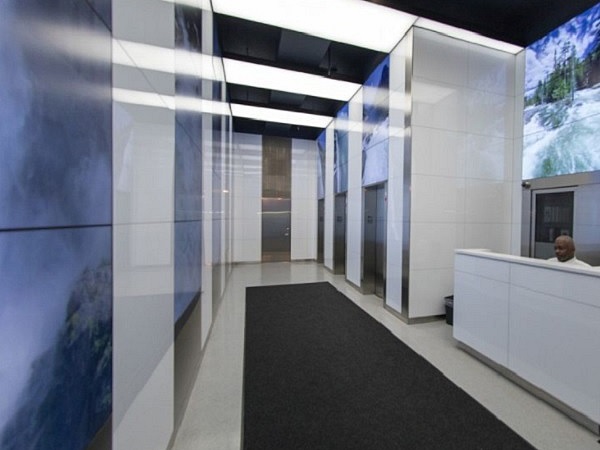Date: 25 January 2007
Excluding these special gains, Corning’s fourth-quarter net income would have been $488 million, or $0.31 per share, which exceeded the company’s guidance for the quarter and also the consensus of Wall Street estimates as compiled by Thomson/First Call. These are non-GAAP financial measures. These and all non-GAAP financial measures are reconciled on the company’s investor relations Web site and in attachments to this news release.
“Our excellent fourth-quarter results capped an outstanding full-year performance for Corning,” Wendell P. Weeks, president and chief executive officer, said. “This was the fourth consecutive year that we recorded significant improvement in the company’s profitability and we reached a new all-time record for net income and earnings per share. We are extremely pleased with our 2006 performance and we believe we are well positioned for continued growth and success in 2007.” These are non-GAAP financial measures.
Corning’s fourth-quarter results included the following non-cash special gains and charges:
- A $139 million pretax and after-tax gain primarily to reflect the decrease in the market value of Corning common stock to be contributed to settle the asbestos litigation related to Pittsburgh Corning Corporation.
- Restructuring and impairment pretax and after-tax charges of $44 million related to the company’s Telecommunications segment.
- A $35 million reduction in income tax expense related to the release of the valuation allowance on certain deferred tax assets in Germany.
- A $28 million increase in equity earnings resulting from net nonrecurring gains at Samsung Corning Co., Ltd., a Korean manufacturer of glass panels and funnels for cathode ray tube (CRT) television and computer monitors.
Full-Year Operating Results
For the full year, Corning recorded sales of $5.17 billion, an increase of 13 percent over 2005 sales of $4.58 billion. The sales increase was the result of continuing strong growth in Display Technologies and improvements in most of the company’s other business segments. Corning had net income of $1.86 billion, or $1.16 per share, versus $585 million, or $0.38 per share, in 2005.
Corning’s net income for 2005 and 2006 included several special gains and charges. Excluding these items, Corning’s net income for 2006 increased 35 percent to $1.78 billion or $1.12 per share compared to $1.32 billion or $0.86 per share in 2005. These are non-GAAP financial measures. The company’s 2006 results also include $81 million, or $0.05 per share, of stock compensation expense resulting from the adoption of SFAS 123R at the beginning of 2006.
“Our Display Technologies business had an excellent year. Volume grew more than 50 percent on strong shipments of larger-generation glass substrates. We are especially pleased that we held our gross margin percentage in 2006 compared to 2005 as strong cost reductions offset price declines that were higher than our historical trend,” Weeks said.
He added, “Year-over-year, our Telecommunications segment experienced sales gains of 6 percent. Excluding the impact of the shift of our Japanese business to an equity affiliate, sales increased 10 percent. The Telecommunications segment also improved profitability, before special items, for a second consecutive year. We sense that a broader recovery in the Telecommunications industry may finally be underway.” These are non-GAAP financial measures.
“We also had another excellent year at our equity affiliates, particularly Dow Corning Corporation and Samsung Corning Precision Glass Co., Ltd. (SCP), which drove a significant increase in equity earnings,” Weeks said. Samsung Corning Precision is a 50-percent owned equity company in Korea which manufactures LCD glass substrates.
Fourth-Quarter Operating Results
Corning’s fourth-quarter sales increased 7 percent over third-quarter sales of $1.28 billion and by 14 percent over last year’s fourth-quarter sales of $1.2 billion. Fourth-quarter gross margin for the company remained strong at 44 percent, comparable to the third quarter.
Including the $28 million net nonrecurring gains at Samsung Corning, equity earnings for the fourth quarter were $272 million compared to third-quarter equity earnings of $232 million. Absent this item, the fourth-quarter equity earnings increase was the result of continued strong performance at both Dow Corning and Samsung Corning Precision.
Fourth-quarter sales for Corning’s Display Technologies segment were $619 million, a 19 percent increase over 2005 fourth-quarter sales of $518 million, caused by volume growth of 48 percent which was partially offset by price declines. Sequentially, fourth-quarter sales increased 22 percent from third-quarter sales of $506 million as volume increases of 28 percent were partly offset by price declines of 5 percent.
Samsung Corning Precision’s fourth-quarter glass volume increased 43 percent year-over-year and 13 percent sequentially. Equity earnings from SCP were $147 million, up 14 percent over last year and up 9 percent compared with the third quarter.
Total LCD glass volume, including both Corning’s wholly owned business and SCP, increased 46 percent year-over-year and 20 percent sequentially. Net income for the Display Technologies segment, which includes results of Corning’s wholly owned business and equity earnings from SCP, increased 25 percent to $461 million in the fourth quarter compared to $368 million in the fourth quarter of 2005, and 17 percent compared to the third quarter.
Weeks said, “As the year went on it became apparent that television was becoming the primary driver for LCD glass growth. We estimate that LCD television penetration reached 22 percent of the world market in 2006, and preliminary retail sales figures indicate that one out of every three TVs sold in the United States last year was an LCD television.
“Greater than one-third of the total LCD glass manufactured last year, measured in square footage, was used to produce LCD televisions.” Weeks added, “In making this transition toward an industry driven increasingly by television sales, we have learned a lot about its seasonality patterns which should help us effectively manage capacity in the future.”
Fourth-quarter Telecommunications segment sales declined by 11 percent to $404 million from $456 million in the third quarter. This fourth-quarter seasonal decline was much less than the company had previously expected due to strong demand from European and North American telecommunications carriers. Year-over-year fourth-quarter Telecommunications sales increased 5 percent.
In the fourth quarter, Environmental Technologies segment sales increased slightly to $155 million from $153 million in the third quarter. Life Sciences segment fourth-quarter sales were $72 million, an increase over third-quarter sales of $68 million.
Cash Flow/Liquidity Update
Corning ended the fourth quarter with $3.2 billion in cash and short-term investments, an increase over the $2.8 billion at the end of the third quarter. The company ended 2006 with total debt of $1.7 billion. “We had positive free cash flow of $540 million in 2006,” James B. Flaws, vice chairman and chief financial officer, said. “Our board of directors has established a goal to maintain a cash balance in excess of debt as a protection against volatility in our markets. The board has also approved priorities for the use of any cash beyond this level. First, we will repay debt maturities within the upcoming three years. Second, we will earmark funds needed for potential major new developments coming out of our laboratories. After these priorities are achieved, the board will consider share repurchases or the reinstatement of dividend payments,” he said. Free cash flow is a non-GAAP financial measure.
Weeks added, “We believe we may be on the cusp of a very productive decade of innovation at Corning. It will be extremely important that we have enough cash-on-hand to fund the development of emerging technologies in our laboratories. Examples of such emerging technologies include green lasers for mobile projection devices and micro reactors for chemical processing.”
2007 Market Outlook
For 2007, Corning expects the overall LCD glass substrate market to grow in the mid-30 percent range, with an increase of at least 400 million square feet of glass over last year’s total volume. The expected volume growth for the year will be equal to or greater than the total amount of LCD glass added to the market in 2006. Corning said that its LCD glass volume is expected to grow at the upper end of this range, while SCP’s volume may be slightly lower than the range. Growth rates by region, and thus by Corning’s wholly owned business and SCP, may be different based on market dynamics.
Corning said that LCD televisions should reach 33 percent of the global television market or approximately 68 million units in 2007. This would be a significant increase over the estimated 22 percent penetration rate or 43 million units produced last year. “This nearly 60 percent increase in television units produced, coupled with an increase in average screen size, may result in almost half of all the LCD glass produced this year going to the television market,” Flaws said.
Corning also expects it will see significant growth in its heavy-duty diesel products this year due to the new U.S. emissions regulations which became effective on January 1, 2007. Diesel products are a part of Corning’s Environmental Technologies segment. The company expects that diesel product sales should increase by more than 60 percent from the $164 million of sales in 2006. This sales ramp is expected to be stronger in the second half of the year.
First-Quarter Outlook
Corning said that it expects first-quarter sales to be in the range of $1.26 billion to $1.31 billion and earnings per share (EPS) in the range of $0.24 to $0.27, before special items. This EPS estimate is a non-GAAP financial measure and excludes any possible special items. The gross margin percent for the first quarter is expected to be 43 percent to 45 percent. The company also expects that its effective tax rate for the first quarter will be in the range of 15 percent to 18 percent.
In its Display Technologies segment, Corning said that first-quarter sequential glass volume for both its wholly owned business and Samsung Corning Precision will be down 10 percent to 15 percent compared to the fourth quarter. Flaws said, “This sequential volume decline reflects the seasonality of the LCD TV market as television becomes a larger part of the LCD industry. Historically, the color television end market has seen 55 percent of total sales occur in the second half of the year. Retail sales of LCD televisions are more weighted in the second half due to the rapid increase in penetration.
“We anticipate that this seasonality decline may fall more heavily on Corning in quarter one due to our overall market share and our new pricing strategy. We expect to see our total glass volume increase significantly as the market expands in the second half of this year. Additionally, we are encouraged that the LCD industry appears to be operating at lower levels during the first quarter in order to avoid a repeat of last year’s panel inventory buildup which caused significant disruption in the LCD supply chain.”
Price declines of one percent to two percent are expected in the first quarter for Corning’s wholly owned business. At SCP, first-quarter price declines are anticipated to be higher and any subsequent declines are expected to be moderate for the remainder of the year.
Flaws said there are a number of factors contributing to Corning’s overall belief that it will be able to achieve lower price declines this year than in 2006. “First,” he said, “last year’s first-quarter inventory buildup by panel manufacturers and the subsequent inventory correction, along with the introduction of significantly more Gen 6 and larger capacity by competitors, were major contributors to the higher than historical price declines in 2006. Second, we are using a new pricing strategy by offering lower price declines in the first part of the year, when demand is seasonally weaker, in order to maintain higher prices in the second half of the year, when we believe that LCD glass will be in tight supply.”
Corning said that lower first-half capacity requirements will allow the company to make necessary melting tank repairs and improvements and accelerate its transition to its environmentally green EAGLE XG™ glass composition.
Corning’s Telecommunications segment first-quarter sales are expected to increase modestly over the previous year and sequentially due to increased demand in North America and Europe. “We are beginning to feel much better about the growth opportunities in the telecommunications industry,” Flaws said, “We expect to see earnings improvement for the full year.”
The company’s Environmental Technologies segment sales are expected to increase about 5 percent from the fourth quarter of last year due to seasonally stronger automotive sales and a modest increase in diesel products sales. Sales for the Life Sciences segment should be up slightly from the fourth quarter of 2006.
Equity earnings for the first quarter are expected to decline 25 percent to 30 percent due to the lower earnings from Samsung Corning Precision and the absence of the fourth quarter nonrecurring gain at Samsung Corning.
“Seasonality factors across a number of our businesses will have an impact in the first quarter but we believe that Corning is well-positioned to achieve another full year of sales and earnings growth. At the same time, we will continue to make the necessary investments in innovation and research that should lead to the next generation of successful products to ensure the long-term success of Corning,” Weeks said.







Add new comment